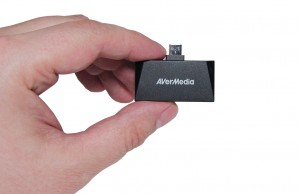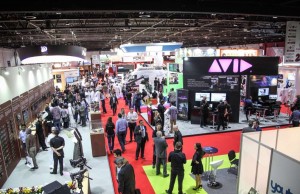September 7, Wednesday, I visited the forum “Digital Broadcasting in Ukraine” in search of information on digital dividend situation. I would like to finally hear, when the analog broadcasting is cut off, and when free frequencies, at once a lot and in a very convenient band of 700 MHz, will be handed over to mobile operators to deploy LTE networks with a nationwide coverage.
This forum is held every autumn for virtually ten consecutive years. Last time, I attended it in 2015, and before that, I visited it for three years in a row. Harrow and alas! Since then, the analog cut-off issue has been brought no further toward resolution. Well, the progress seems obvious, because again, for the umpteenth time, the cut-off deadline is scheduled for 30 March 2018. However, the fact is that it has been rescheduled for the third consecutive year…
Oleg Mayornikov from the State Service of Special Communications and Information Protection of Ukraine (DSSZZI) refused to accept the idea that the analog would be finally cut off in 2018. According to him, in fact, in 2015, Ukraine assumed just a commitment not to interfere with digital TV and LTE networks of neighboring countries. That is why the government does not have any binding obligations regarding the cut-off on 30 March 2018. Mr. Mayornikov forwarded an issue of budget financing to transit to the digital TV, saying that there would be nothing done without money. It is revealing that there was no mentioning “Zeonbud” and its countrywide coverage obligations.
Fedor Grechaninov, Director for Strategic Development at StarLightMedia, acknowledged that the task of cutting off analog TV broadcasting and final transiting to DTV turned out to be more complicated than he thought a couple of years back. In his opinion, the root of the problem is that the market players did not initially agree on the transition strategy and its content. There is no consensus on the matter, what should the TV market look like after this transition.
Mr. Grechaninov deems very important the idea that Ukrainian television should be a business. He repeated it many times in different ways, asked questions like “Can the advertising market support 32 or more TV channels?”, discussed “Zeonbud”’s entry into the market as a TV broadcaster and the expediency of switching Ukrainian TV to a paid model. We have to acknowledge that the discussion about television as a fully functional business is still in demand and popular among market players.
For an hour and a half, nobody told or reminded the audience of the basic facts about the structure of commercial television in Ukraine. Nobody reminded that all Ukrainian media groups were and apparently would be planned unprofitable projects of influence for a long time. For their owners, the revenue from advertising and other commercial activities is just a means of reducing their costs. Ukrainian media groups and, through a broader lens, television in our country is not a business in ordinary terms. Therefore, the market rhetoric regarding these structures is a priori insincere.
Yaroslav Pakholchuk from “1+1 Media” supported his colleague from StarLightMedia, recognizing the existence of unsettled conflicts between market players. “Why did not we turn it off? Because they were not ready”, he said. The stumbling point, as before, remains the digital coverage issue. Mr. Pakholchuk highlighted two aspects of the problem: the territorial coverage and the availability of digital receivers to the population.
Today, the market has developed the idea that the actual digital TV coverage is inferior to the analog one. As before, nobody believes in the ability of the government to make “Zeonbud” expanding coverage at its own expense. According to Mr. Pakholchuk, the media groups back up the idea of changing DTV signal encoding protocols. The transition from 256-QAM modulation to the 64-QAM one will produce an effect similar to the signal power increase and provide a 15% coverage area expansion.
As for TV tuners, again, year after year, there are repeated complaints that the program for providing population with DTV receivers was derailed. Of the 1 million 300 thousand households that applied for T2-tuners, 800 thousand did receive them. This, of course, undermines, damages and discredits the relevance, possibility and expediency of analog broadcasting cut-off. No one, no Ukrainian citizen should be left without terrestrial television!
Words and deeds
The wordy explanations of market players, why they strongly agree and are almost ready to give up the analog, but not right now, a bit later, someday, give a strong sense of deja vu. Similar discussions have been held for at least five consecutive years. It cannot be said that nothing changes at all and there is no progress. This year, media groups announced that they had reached a consensus on the cut-off importance. There is another consensus to reach, on cut-off conditions and, dammit, turn off the ill-fated analog signal. Until the ranger comes to kick out everyone.
The origin of that three-year deadlock digitalization of terrestrial TV in Ukraine is the absolute prevalence of private interests in defining and implementing national policy. Each of the top-four media groups has somewhat distinct audience coverage with both the analog and digital signal. In the event of cutting off analog broadcasting, some returning subscribers will find themselves outside the coverage area of digital terrestrial broadcasting and will have to do something. It is hard to predict what exactly. It means that the analog cut-off will lead to the repartition of media groups’ audience and, accordingly, the redistribution of advertising market revenue.
The same media groups assess the scope of this redistribution as “not too large”. Obviously, to ensure the absolute coverage identity of two fundamentally distinct broadcasting networks is technically impossible. Someone from the top-four players will lose at least a little, and someone will gain a little. A sound regulator representing a competent government would settle this trivial issue in due course, guided by the priority of social interests and government obligations.
Unfortunately, the Ukrainian government does not have its own will in this area. The truth of the government policy is to protect interests of the country’s largest FIGs, which own media groups. As a result, each of the four ones has a blocking stake, and together they represent the most serious obstacle to the digital transformation of Ukraine.
Pourquoi pas?
The position of media groups that hold a good share of the frequency resource, like a dog in the manger, causes growing irritation. An interesting analogy was drawn in the speech of the President of the Telecommunication Chamber Serhii Boyko.
The lending bank granted a loan of certain amount of money to the borrower. The bank granted it for a limited period and in banknotes, notifying that in certain year it would change banknotes for plastic cards, therefore the payment (interest) for using money would be very small until the moment of exchange. It was time to reimburse the loan.
However, the borrower, instead of replacing borrowed money, declares that “… he does not believe in lender’s “plastic”, and suggests not returning banknotes and issuing a plastic card for the same amount to him to use two amounts of money simultaneously in different forms in order to make sure that the plastic is not worse. And after that, he will repay money issued in banknotes”. Impudence? For some reason, the managers of the lending bank agreed.
As a result, the borrower got the amount twice as much as the initial one, for which use he pays few if any. Moreover, this fact does not allow the lending bank to issue new plastic cards for the same amount in view of facing inflation risks, or at least to trade for recycling paper spent on printing banknotes.
Some time passed. The borrower suggests again that the lender would extend the payback period, this time referring to the care of people who are not yet aware of using plastic cards. Then, the same happened once again, while the explanation was lacking ATMs for plastic cards. The same situation has happened this year. According to the tone of discussions at today’s forum, there are no guarantees that the borrower would reimburse the loan in the coming year.
An original thought! So, really why the rent rates for using frequency resource for television are next smaller than those for mobile communications? The actual rates for analog broadcasting are shown in the chart. For reference, the mobile operators pay UAH 23085.25 for each megahertz. This is THREE times higher! The activities of Ukrainian media groups are not socially important or useful, since this is a tool for political influence of their owners. The function of providing information to the public is duly performed by public television. The educational function is not interesting to media groups for commercial reasons. The culture, promoted by media groups, is not worth even mentioning. It sits on the fence.
| 16. | Broadcasting and rebroadcasting of TV picture depending on transmission power | 300-880MHz | |
| up to 10W inclusive | 32,15 | ||
| from 10,1 to 100W inclusive | 64,29 | ||
| from 101 to 1kW inclusive | 140,28 | ||
| from 1,1 to 5kW inclusive | 277,64 | ||
| from 5,1 to 20kW inclusive | 555,21 | ||
| from 20,1 and above | 695,49 |
It seems quite reasonable that the Ukrainians would earn for using their frequencies by TV broadcasters no less than from mobile business. Then, you see, the analog cut-off problem will settled naturally. Then, it will be possible to use the “digital dividend” to overcome the “digital gap”.
Few words about MMDS
Then why, properly speaking, we should take as the source of the “digital dividend” only the TV broadcasting conversion? There is, at least, one more frequency reserve. These are data networking micro-operators or every legal entity with signs of fictitiousness. They go on using hundreds of megahertz of valuable frequencies, paying for them five hundred times less than fully functional operators do.
The telemetry report presented an evaluation of the “MMDS-Ukraine” subscriber base. According to Orest Biloskursky, Marketing Director at StarLightMedia, within the sample of 5 thousand people, only 1-2 individuals reported on their subscription to that company. The BigData project offers the following figures of subscribers to marginal technologies like MMDS. I suspect that this category also includes various pre-WiMAX, derived from the family of 802.11 standards and all that exotica.
According to Serhii Boyko, the actual number of TV subscribers using the MMDS-Ukraine’s network is below 15,000. The company itself declares 40,000. These data make us to think again about the terms of the 4G tender. The conversion of each subscriber of this micro-operator owned by Rinat Akhmetov will cost market players and budget that will not receive this money some totally insane amount from UAH 4,770 in terms of 117 thousand subscribers, and up to UAH 37 333 in terms of 15 thousand of them. The question is unavoidable: would that be too good?
| Share |
Households that use certain TV reception mode (TIC data as of 1.05.2016) |
Share |
Households that use certain TV reception mode (TIC data as of 1.08.2017) |
|
| All Ukraine | 15 011 625 | 14 681 025 | ||
| Analog broadcasting | 40,30% | 6 049 685 | 40,90% | 6 004 539 |
| Digital broadcasting | 10,90% | 1 636 267 | 14,60% | 2 143 430 |
| Analog cable broadcasting | 35,70% | 5 359 150 | 33,80% | 4 962 186 |
| Digital cable broadcasting | 6,30% | 945 732 | 6,30% | 924 905 |
| Satellite broadcasting | 28,90% | 4 338 360 | 31,00% | 4 551 118 |
| IPTV* | 3,90% | 585 453 | 2,10% | 308 302 |
| MMDS/other | 0,70% | 105081 | 0,80% | 117 448 |
However, that question has been already raised not yet in public, but behind the curtain. As Good Samaritans inform, the NCCIR faced again a deadlock need to engage in a special scheme for saving SCM investment in “MMDS-Ukraine”. Having agreed on the amount of fair compensation to the most authoritative businessperson of the country, the commissioners must duly document that deal now.
Within the already agreed 4G tender procedure for the band of 2600 MHz, the formal legal basis for transferring money to SCM was a conversion mechanism. And here is a bottleneck. The fact is that the money should be paid not only to SCM for frequencies in the band of 2600 MHz, but also to operators of the big three for frequencies in the band of 1800 MHz, because “Kyivstar” and “Vodafone” agreed to give up a bit of Radio frequency resource in favor of lifecell, traditionally deprived of frequencies.
The problem was to invent an algorithm for calculating conversion costs, which would give a comparable result for the half-dead micro-company, on the one hand, and for the country’s largest operators with multibillion-dollar turnovers and tens of millions of subscribers, on the other hand. This very funny collision is still awaiting its detailed coverage. In the meantime, we can confine ourselves to the statement that the tender for 2600 MHz is not that simple, and money hunger can still ruin many suckers there are still much more wrinkles to see.
In conclusion, I would like the country, the government and the market to find a nerve to rise above personal interests as soon as possible, to get the “digital dividend”, to overcome the “digital gap”, and to live happily ever after.

















